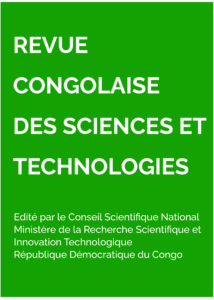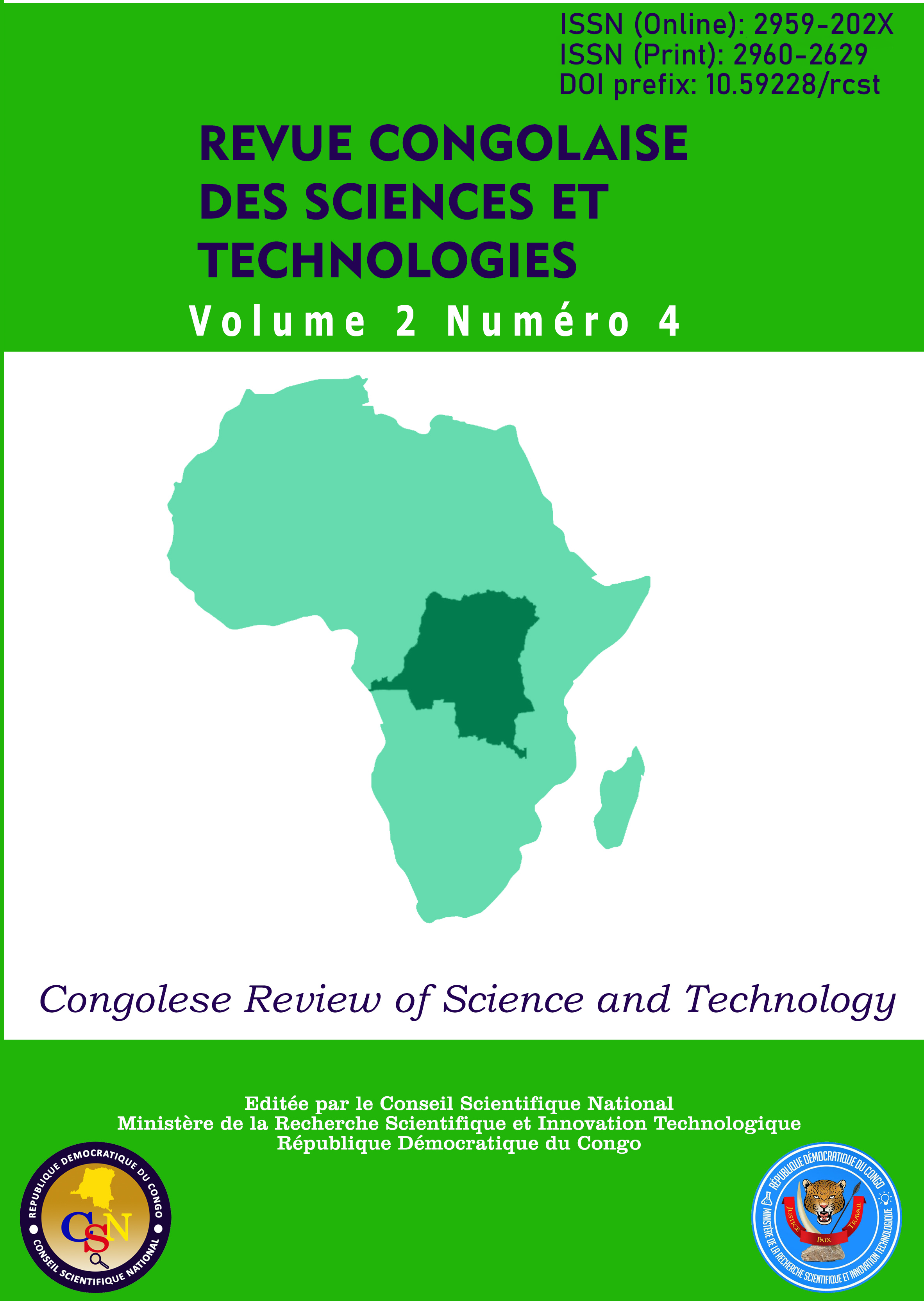Geological modeling and estimation of a Bekisopa iron deposit, Madagascar
Main Article Content
Abstract
This study aims to carry out an in-depth analysis of the geology of the iron deposit in question and to explore its exploitation potential. By
combining field observations, drilling operations, geological analyzes and the use of modeling tools, our intention is to achieve an in-depth
understanding of the composition, distribution and geological characteristics of the iron deposit of Bekisopa discovered by H. Besairie in
1933. The evaluation of iron reserves was carried out by applying geostatistical methods, in particular kriging. Data from drilling, together
with geological information from three-dimensional models, were used to establish variograms and spatial continuity models. This approach
made it possible to arrive at a quantitative estimate of the iron reserves present in the deposit. A total of thirty boreholes were carried out over
an area of one square kilometer. These drilling data were crucial to calculate a volume of the deposit of around 25,000,000 cubic meters,
taking into account an average density of the deposit of 4,500 kg/m3 and an average grade of 40%. This estimate led to a value of ferrous
resources of around forty million (40,000,000) tonnes. Given that the ore is at a relatively accessible depth on the surface, the option of open
pit mining presents itself as a feasible and attractive alternative. This type of mining involves extracting ore from large open pits, an
economically viable approach when mineral resources are located near the surface.
Article Details

This work is licensed under a Creative Commons Attribution-NonCommercial-ShareAlike 4.0 International License.
References
Bibby, P. (2022). Raport Mineral Resource and
Reserve. Melbourne, Australasian Instituteof
Mining and Metallurgy (MAusIMM).
Besairie, H. (1959). Rapport annuel du service
géologique pour 1959.
Dowd, P. A. (2015). Mineral Resource and Reserve
Estimation: Guide to Good Practice.
Melbourne. The Australasian Institute of
Mining and Metallurgy.
Daso, A. A. H. (1978). Le gisement de fer de
Bekisopa. Antananarivo, [Mémoire de fin
d’études, Etablissement d’Enseignement
Supérieur Polytechnique d’Antananarivo].Fournie, L. (1961). Géologie de la région
Ikalamavony-Ampandramaika-Bekisopa,
Centre-Sud de Madagascar. Antananarivo,
BRGM.
Fournie, L. (1962). Le gisement de fer de Bekisopa
[Rapport de fin de travaux]. Antananarivo,
BRGM.
Porwal, A. & Carranza, E. J. M. (2011). GIS-based
Analysis of Mineral Prospectivity. New Delhi.
CRC Press.
Rasoamahenina, J.A. (1971). Etudes
complémentaires du gisement de fer de
Bekisopa. Antananarivo. Bulletin de
l'Académie Malgache.
Rasoamahenina, J.A. (1978). Les ressources en fer de
Madagascar et réflexions sur les aptitudes
sidérurgiques des minerais. Bulletin de
l'Académie Malgache.
Dubois, O. & Stenger, A. (2015). L'évaluation des
impacts environnementaux: Concepts et
méthodes. Versailles, Editions Quae.
Jaotombo, N. (2007). Utilisation de la Geostatistique
dans l’evaluation des reserves du gisement de
fer de Bekisopa [Mémoire de fin d’études,
Etablissement d’Enseignement Supérieur
Polytechnique d’Antananarivo].
Englund, E. & Sparks, A. (1988). GEOEAS
(Geostatistical Environmental Assessment
Software) User’s Guide. Las Vegas, NTRL.
Fournie, L. (1962). Le gisement de fer de Bekisopa
[Rapport de fin des travaux]. Antananarivo,
BRGM.
Rasolomanana, E. & Rambolamanana, G. (2006).
Concepts et méthodes de la géostatistique,
Rappels théoriques sur la géostatistique,
Application de l’outil géostatistique pour
l’évaluation du gisement d’Ambatovy.
Antananarivo, IOGA.
Golden Software. (2002) Surfer (Version 8.0)
[Logiciel]. Golden Software.
https://www.goldensoftware.com/
Nirianarijaona, V. A. (2016). Hiérarchisation de
gisements de fer de Madagascar par analyse
multicritères Electre tri. [Mémoire de Master,
Faculté des Science ANTANANARIVO].
Rasetraharison, M. T. (2010). Monographie des
gisements de fer de Madagascar [Mémoire de
DEA, Ecole Supérieure Polytechnique
d’Antananarivo].
Roig, J. Y. & Delor C. Carte géologique de la
république de Madagascar (1 :1000000).
, BRGM.

